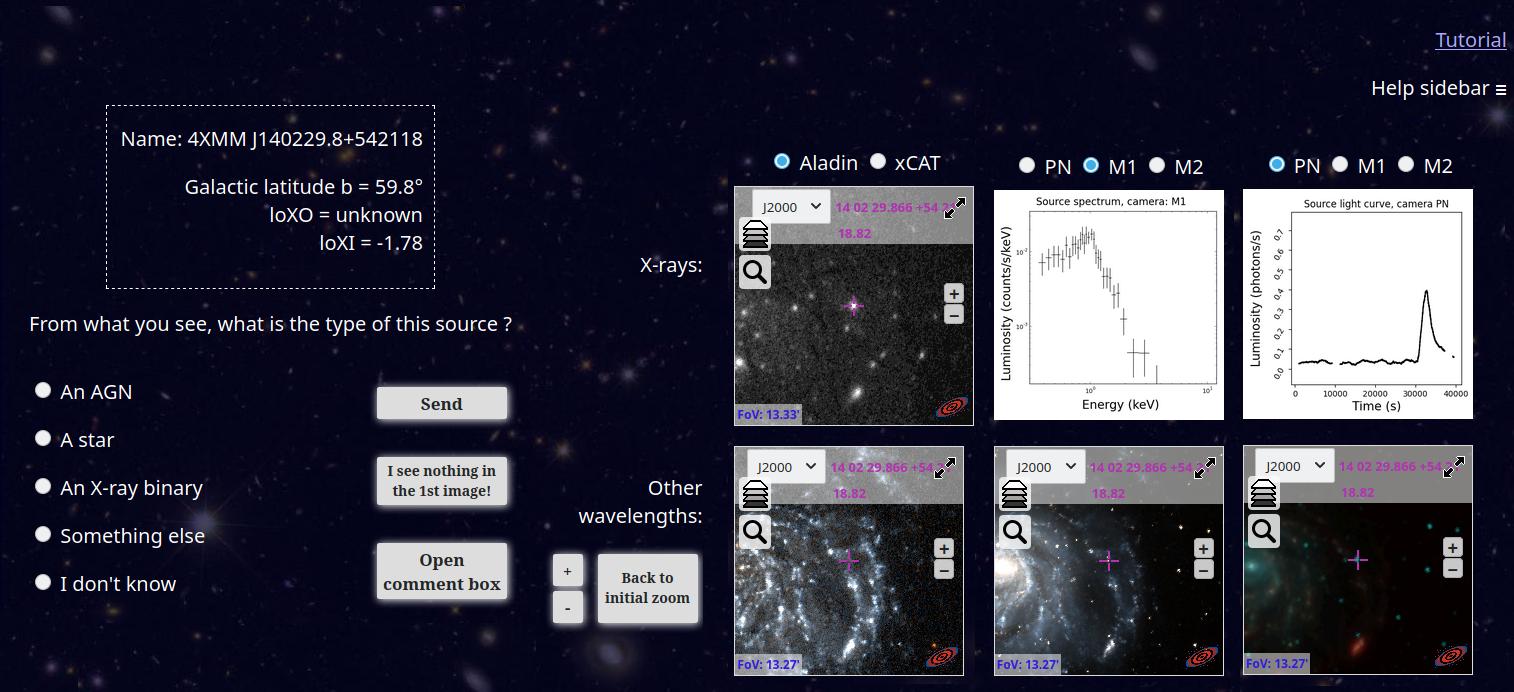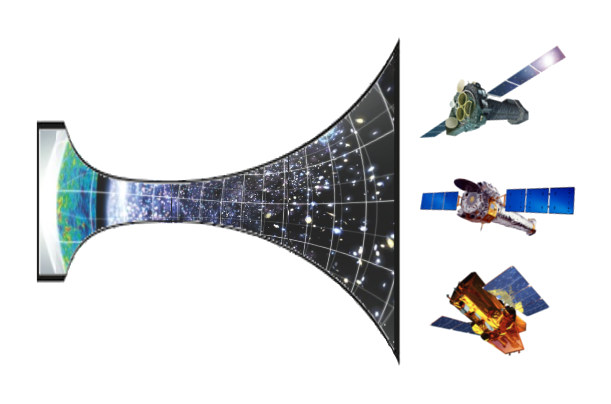X-ray astronomy deals with the study of X-ray observation and detection of astronomical objects. X-rays are a form of light beyond the energies our eye and our skin are used to detect and feel. They were first discovered and studied in 1895 by Wilhelm Röntgen in lab experiments, but until the 1960s, astronomers did not know of any stars or galaxies that shone in X-rays. Because Earth’s atmosphere absorbs most X-rays, X-ray telescopes and detectors are taken to high altitudes or into space by balloons and spacecraft, and the advent of such instruments led to groundbreaking discoveries of other very bright sources like Scorpius X-1, the first X-ray source detected outside our Solar System, found in the constellation Scorpius.
Since then, the X-ray Universe has revealed an incredible
richness in types of sources and effects they have on their environment: from the supermassive black holes found at the center of all massive galaxies (each one weighing more than a million Suns!) to exotic objects formed following the death of massive stars (neutron stars, magnetars, X-ray binaries, cataclysmic variables…) and even some of the most violent explosions known in the Universe so far (supernovae, gamma-ray bursts), the study of X-ray sources is an exciting field of astronomy which has revolutionized our knowledge and still faces a lot of open questions. What is the origin of supermassive black holes? What is the nature of the matter in a neutron star? What is causing the very high temperatures of stellar coronae, making them visible in X-rays? Where do short gamma-ray bursts come from?
To answer these questions, we often need large samples of observations, and here is the rub: we have no efficient way to identify all of the objects detected in X-ray - more than half a million objects. Analyzing them individually is a very long job for one person to do, and artificial intelligence requires a large learning sample to do a reliable job. In this context we tried an approach completely new for our field: citizen science. Citizen science is based on the wisdom of crowds: if you have to guess the weight of a cow by just seeing it, you will probably give a bad estimate. But if you average the estimates of a whole crowd, you will get a result very close to reality! Based on this principle, scientists have already developed many studies (notably gathered in the
Zooniverse website). We want to do the same for X-ray astronomy, and we have put together this platform to enable you to join the adventure. You are all able to help us, so please subscribe, explore the tutorial and have fun in contemplating and discovering new supermassive black holes, stars and other objects that have never been identified!
 Preview of the website. The object at the center of the images was first thought to be a very luminous so-called "X-ray binary", that is a couple made up of a neutron star or a black hole and a massive star, but was recently found to rather be a highly magnetic, low-mass star.
Preview of the website. The object at the center of the images was first thought to be a very luminous so-called "X-ray binary", that is a couple made up of a neutron star or a black hole and a massive star, but was recently found to rather be a highly magnetic, low-mass star.
Who would have believed it? ;)


